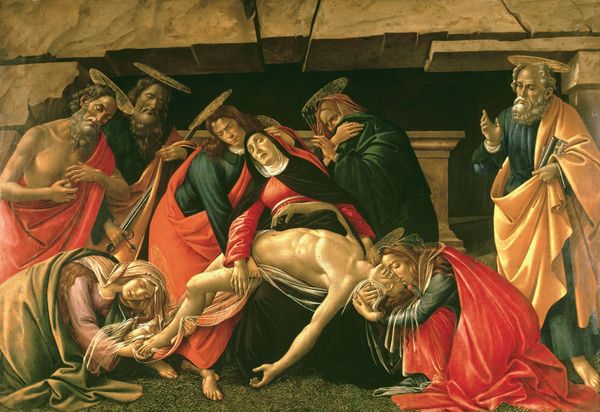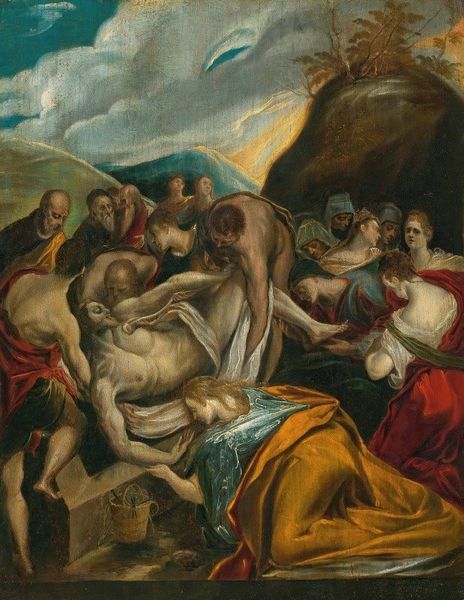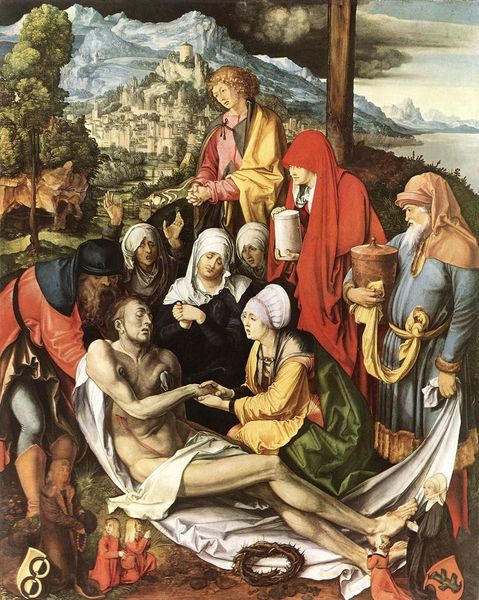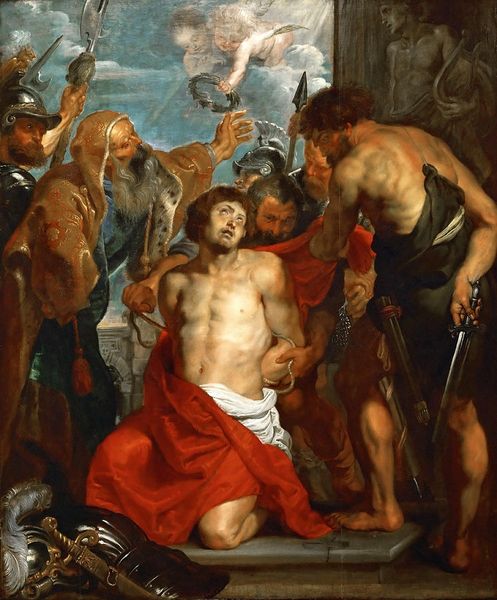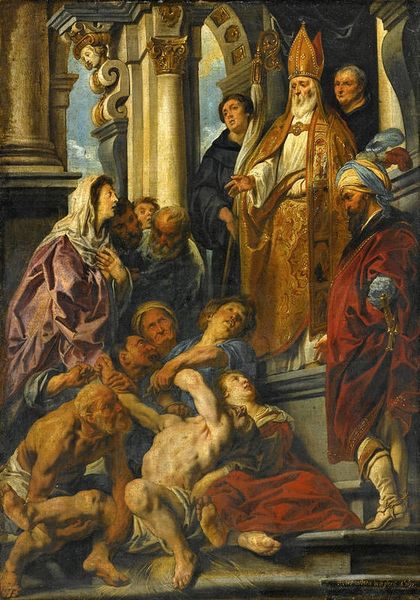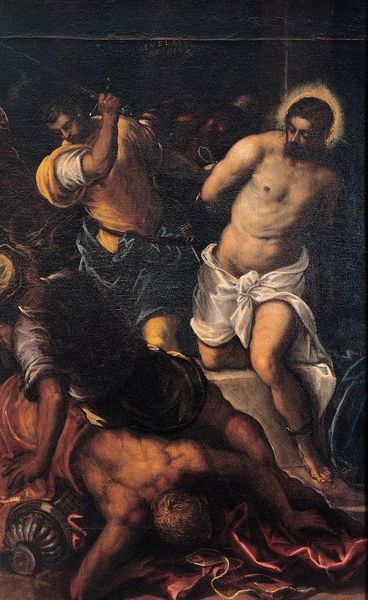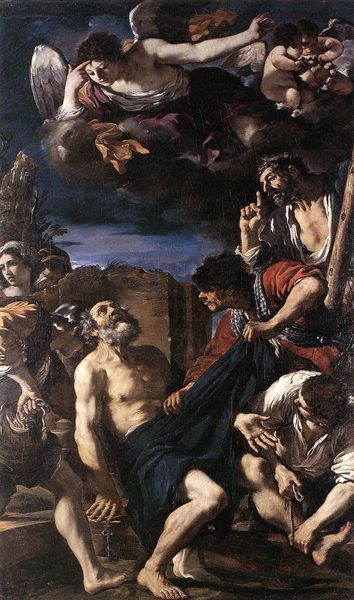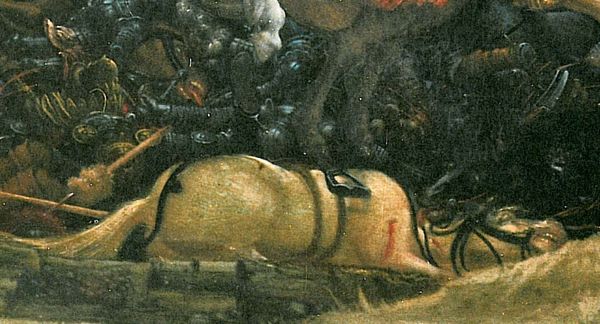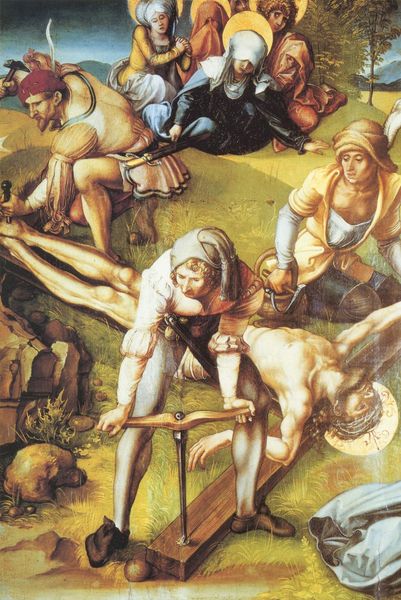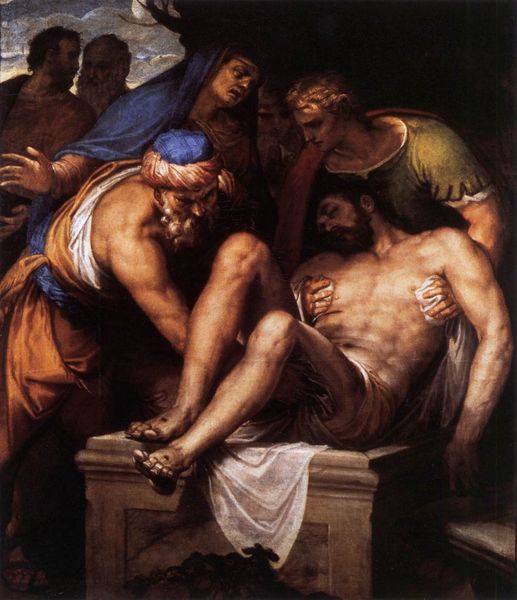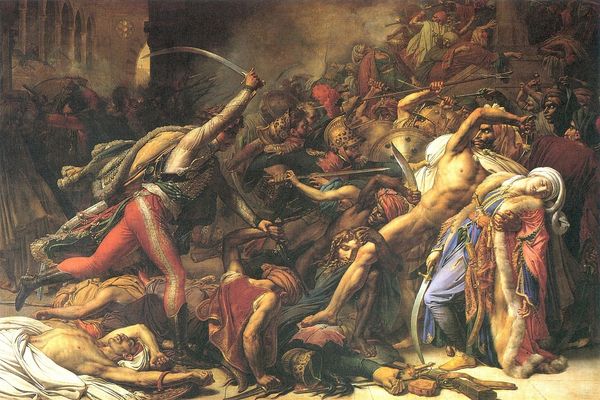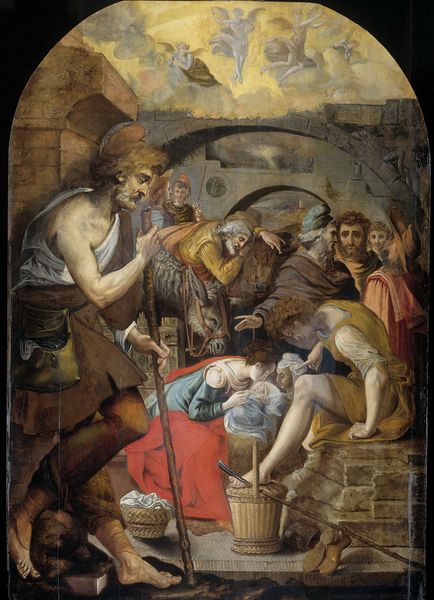
tempera, painting, oil-paint, mural
#
allegory
#
narrative-art
#
tempera
#
painting
#
prophet
#
oil-paint
#
landscape
#
figuration
#
oil painting
#
mythology
#
history-painting
#
academic-art
#
italian-renaissance
#
early-renaissance
#
mural
Dimensions: 25 x 31 cm
Copyright: Public domain
Curator: Botticelli's "The Discovery of the Body of Holofernes," created around 1470, utilizes tempera, and to a lesser extent oil paint, an interesting blending of media for that period, don't you think? Editor: Certainly intriguing. Immediately, my eye is drawn to the almost theatrical arrangement—the way the figures are grouped around the bed. There's a tension between the grim discovery and a staged drama. Curator: The process itself, the building up of layers with tempera, would have demanded incredible precision. And the addition of oil paint allowed for greater depth and realism, particularly in the rendering of fabrics and skin. The patronage of the Medici family clearly demanded a high level of craftsmanship. Editor: Yes, the Medici influence is apparent. This scene echoes so many visual motifs—sacrifice, justice, and, of course, female empowerment. Judith becomes a symbol of deliverance for her people, echoing biblical heroines, but with the added weight of political subtext within the Florentine context. Holofernes head at Judith's servant feet mirrors the constant use of decapitation and severed heads for many Renaissance painters, usually male warriors or rulers, as an effective scare tactic and as means to convey to those with any political ambition, 'look what happened to him'. Curator: It’s interesting how the composition emphasizes the labor involved in Judith’s act, yet her absence creates a powerful void, shifting focus onto the materiality of the aftermath: the linen sheets, the gleaming sword. The bed becomes more than a prop; it's the site of clandestine action and liberation for the Hebrews. What can the presence of a warhorse standing beside Holofernes death bed suggests about a change in political alliances? Editor: And that sword, standing erect like that of the one featured in Paolo Uccello "Battle of San Romano", an implicit symbol of justice and a clear visual marker pointing toward Judith’s heroism. Botticelli very cleverly directs us towards its deeper meaning. A divine feminine protecting Florence's stability through calculated defiance. A woman using cunning strategies against brutish force and strength. It does provide, metaphorically, a glimpse into Renaissance notions about women's active role in history making and mythmaking. Curator: Ultimately, Botticelli gives us insight into workshop practices and artistic innovations of his time, how those material realities shaped not just what we see, but how those powerful people lived, produced, and gained significance through the tangible world. Editor: It's true, focusing in on these enduring symbols that the painting holds make a timeless meditation about power and resistance.
Comments
No comments
Be the first to comment and join the conversation on the ultimate creative platform.
